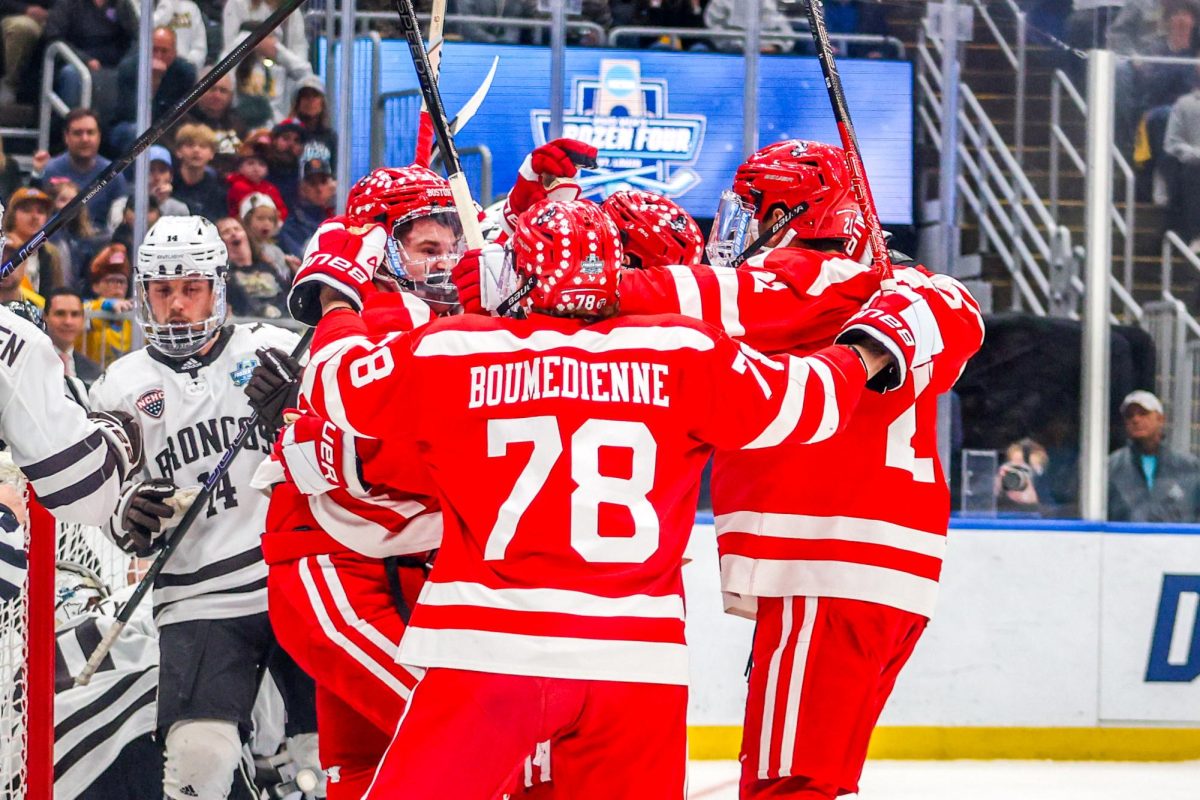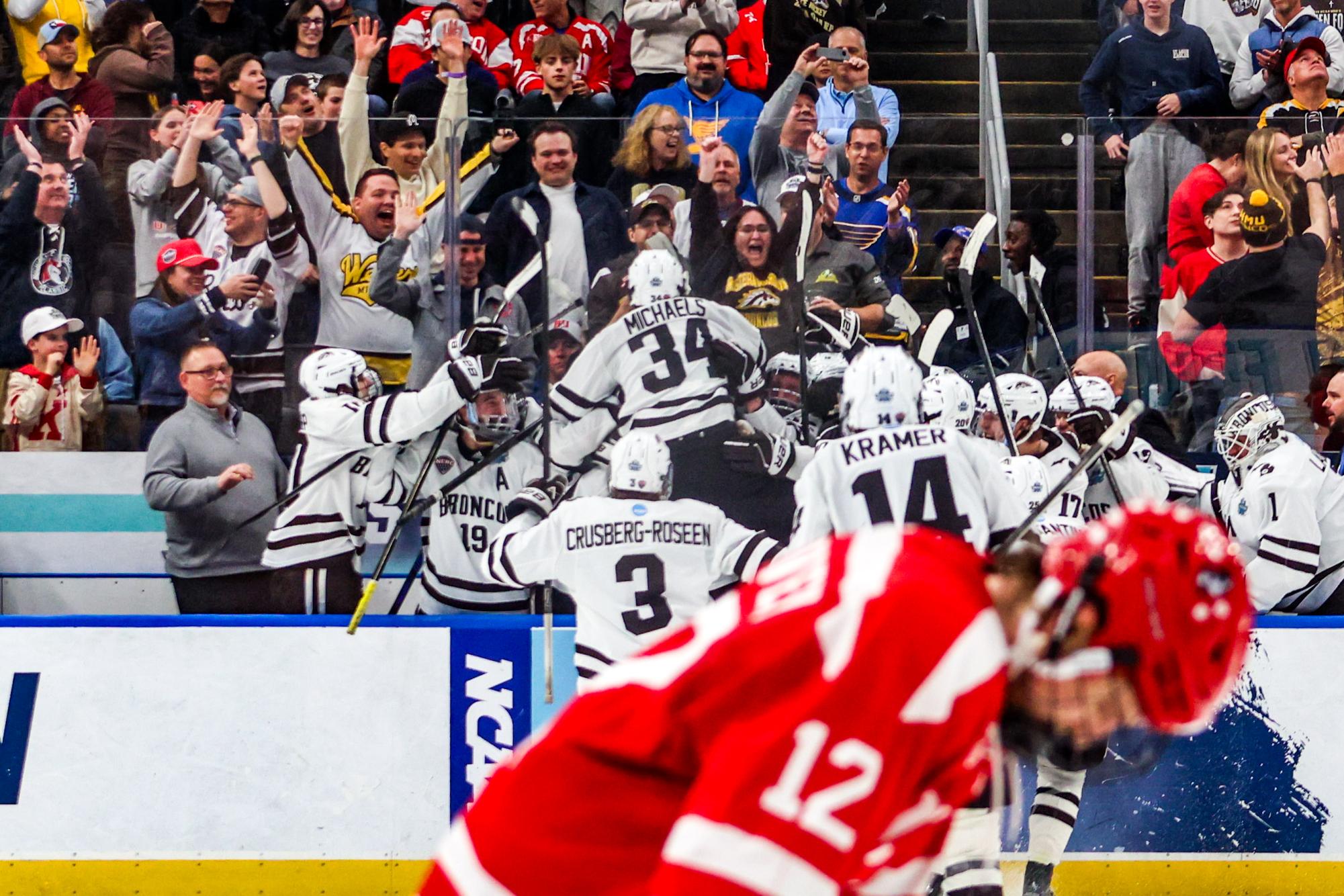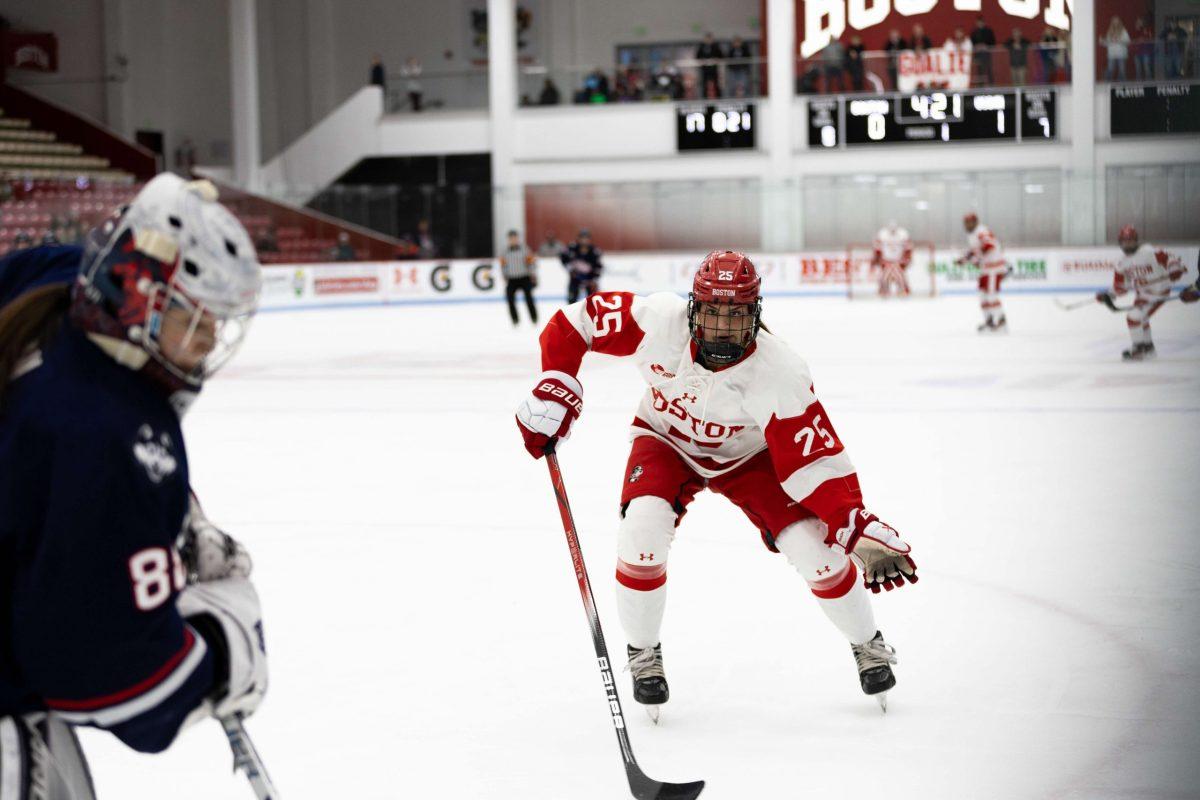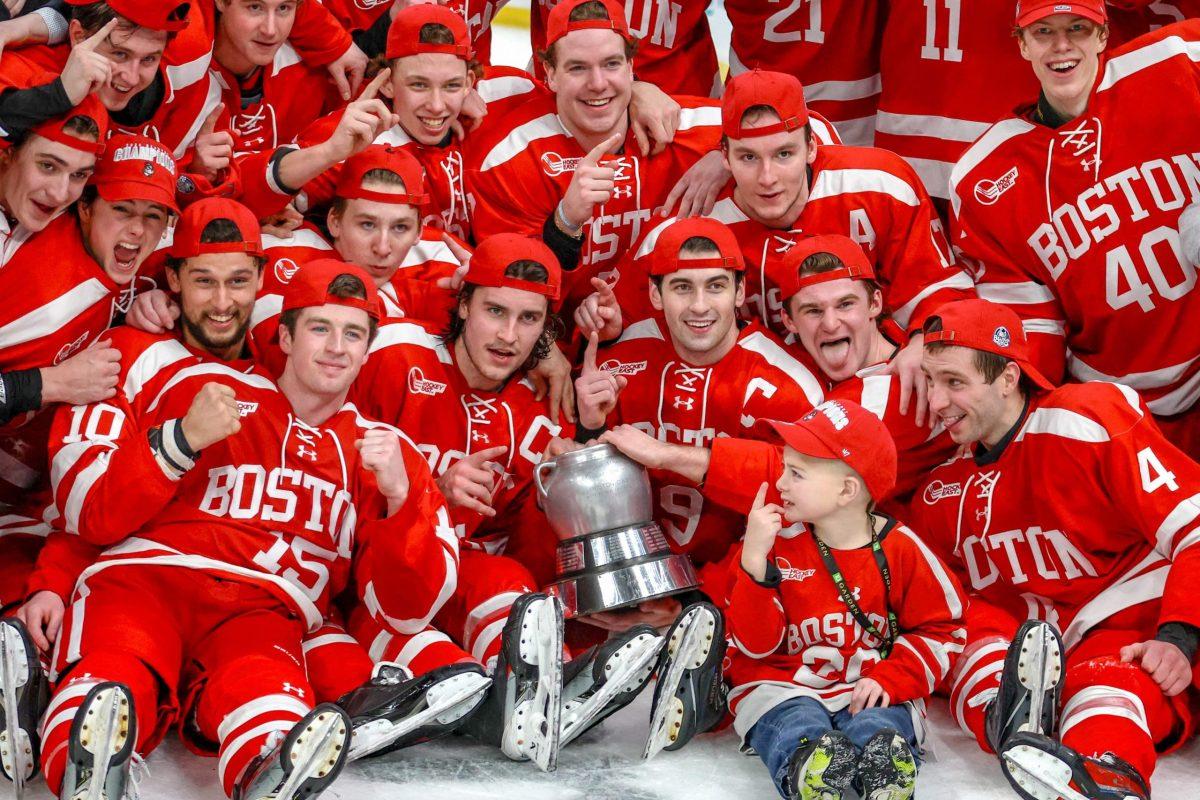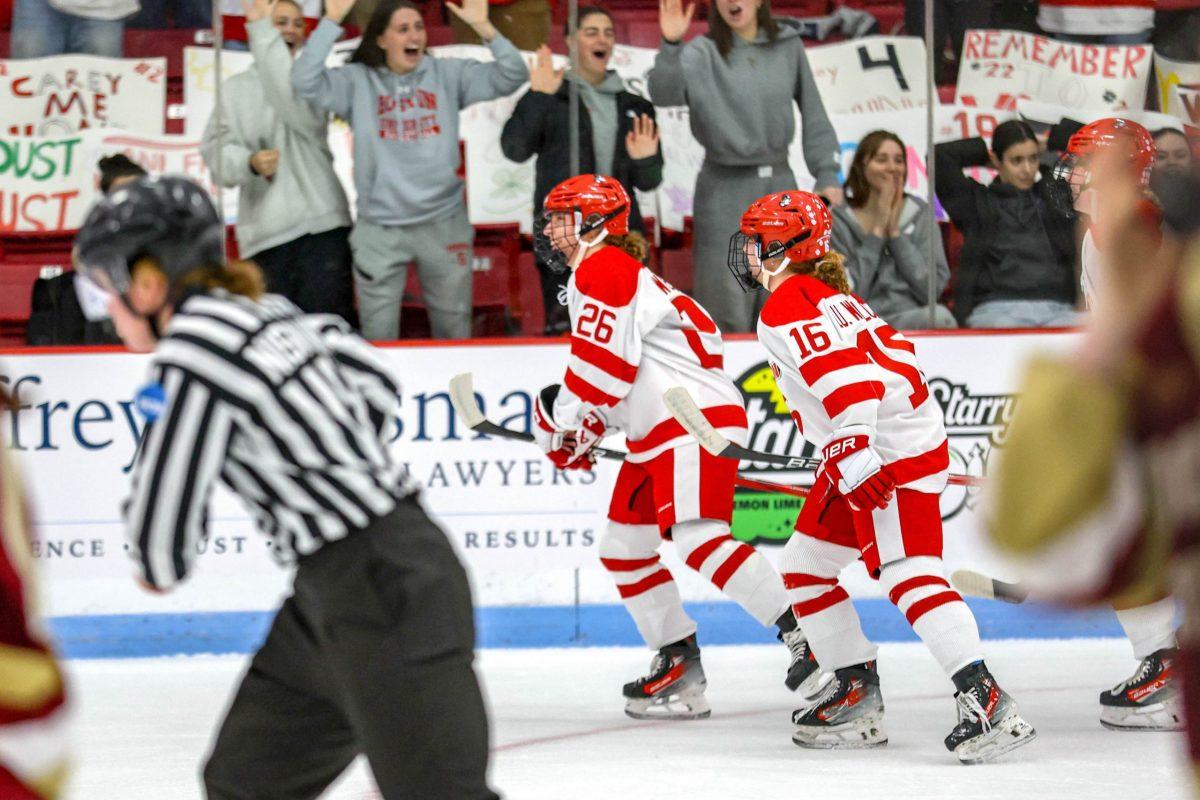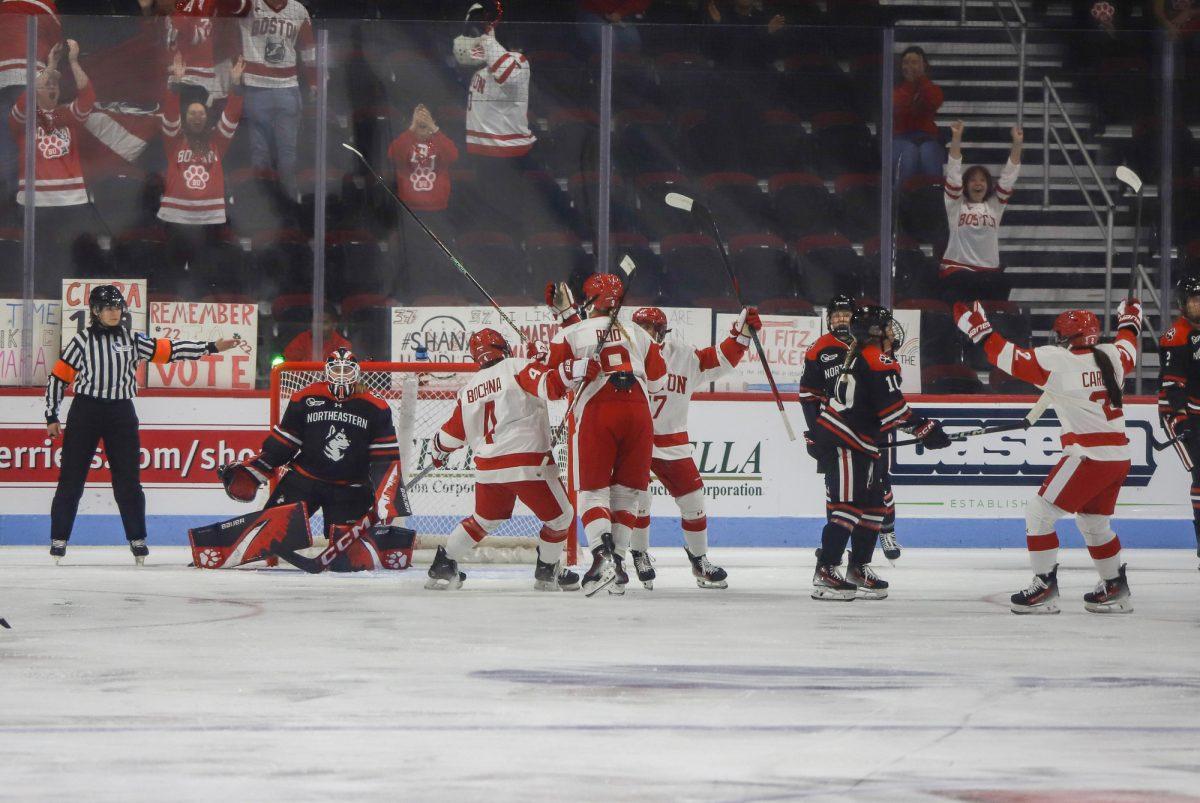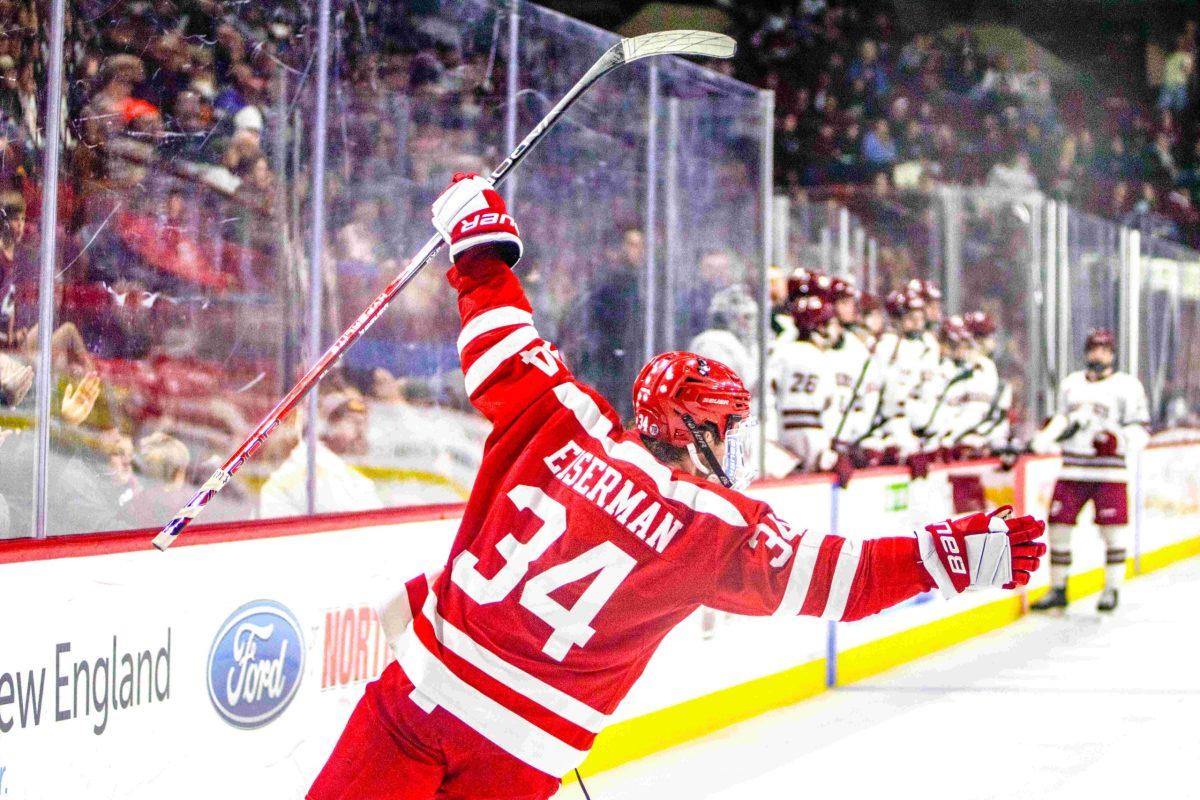AS THE BOSTON UNIVERSITY men’s hockey team enters the fourth year of the Jay Pandolfo era, the Terriers have a nation-leading 19 NHL draft picks on their roster. Ten of them were taken in the first or second round, also an NCAA high, making Pandolfo’s group of the highest pedigree in the country. The tradeoff? The Terriers have 20 underclassmen on a roster of just 26. They are the youngest team in the NCAA, with an average age of just 20.1 years old (per College Hockey News). They only have one senior, and he wasn’t even on the team last year.
Pandolfo has been building his team this way ever since he arrived. Last season, BU had 14 draft picks and was the third-youngest team in the country. The year before that: 13 and fourth. It is easy to look at the staggering imbalance on BU’s roster and conclude that Pandolfo, alongside associate head coach Joe Pereira, who leads recruiting, is choosing the far end of a roster-building spectrum: young, highly drafted but inexperienced teams on one side; older, less talented but more experienced teams on the other.
This is the narrative that took hold when BU met Western Michigan, which only had seven draft picks, none of them first- or second-rounders, in April’s national championship game. The matchup was billed as a clash between the two opposite sides of that spectrum, and when WMU won 6-2, sending the Terriers home from the Frozen Four without a national title for the third consecutive season, an argument about BU and programs like it exploded: This style of roster construction — this style of hockey — can’t get it done.
“I think across the scouting landscape, that is the belief,” an NHL scout, who was granted anonymity to speak freely, told me. “That older, “less skilled” teams tend to go further towards the national championship than the skilled teams.”
The numbers and results appear to support it. There have been five national champions crowned in men’s college hockey since COVID-19 cancelled the 2020 tournament. Over that same span, 99 first- or second-round picks have played in the NCAA, and only seven have won the whole thing. All did it at Denver in either 2022 or 2024 (and only one, Zeev Buium, was a first-round pick). That also means that UMass, Quinnipiac and Western, three programs that won their first titles in the five seasons since the pandemic, did so without a first- or second-rounder on the roster.
So what’s happening here? Is there something about young, highly drafted players that doesn’t work on college hockey’s biggest stage? Does Western know something BU doesn’t? Is there a style of play that young, talented teams can’t produce but older, more experienced teams can?
When I spoke to Tom Upton, an assistant coach at UMass, I wanted his insights on Western and BU. He game planned against both last postseason — an overtime loss to the Terriers in the Hockey East quarterfinal and an NCAA regional final loss to the Broncos. How were their styles different?
“I thought they were actually very similar,” Upton said.
Really?
“The people that think they’re completely different,” he told me, “are the people that look at the draft picks.”
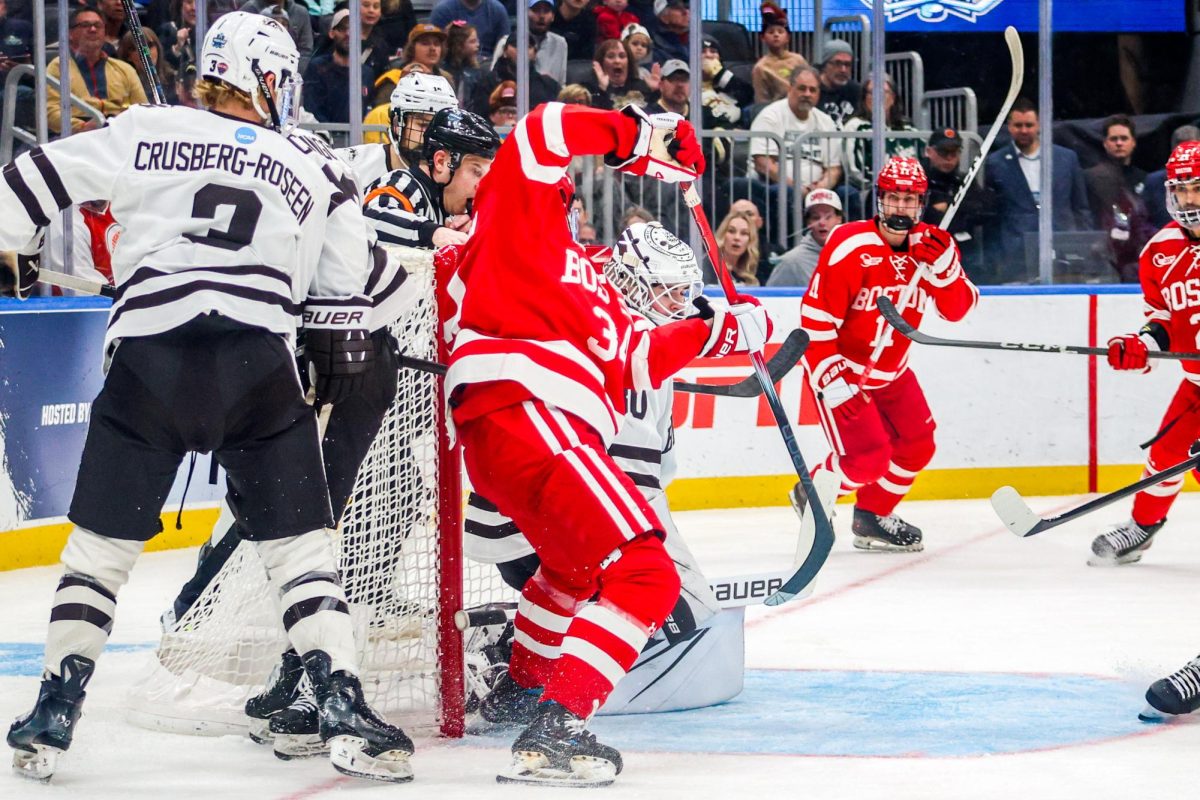
WHAT DOES IT MEAN to be a draft pick? In college hockey, the instinct is to think it means quite a lot.
Hockey is one of only two major sports in which players who were already drafted by pro teams compete in the NCAA. (But if a drafted baseball player chooses to play in college, the team that drafted him loses his draft rights.) Whereas in college basketball, football and baseball, projected draft status is one of the few standardized measures of talent, no projection is needed in college hockey. There is a round, pick and NHL logo — or not — next to every player’s name on every line chart. Accordingly, rosters and recruiting classes are judged by where and if guys were drafted, and first- and second-round picks become the presumed superstars in the sport.
This is at least partly why the perception of BU and Western heading into the national title game was what it was. The Terriers were led by Cole Eiserman (20th pick in 2024) and Cole Hutson (43rd), backstopped by Mikhail Yegorov (49th) and co-captained by Ryan Greene (57th in 2022). The Broncos’ star was a fifth-round pick named Alex Bump, who no one outside of Kalamazoo and Philadelphia would’ve been all that familiar with; their next three leading scorers were all undrafted. If draft status was your only measuring stick, you’d reach the conclusion that Western was suffering from an enormous talent deficit.
Yet the Broncos won 6-2.
“When you look at where they’re drafted, all that says is: up until [the day of said draft], you have looked good enough that I can project you to be an NHLer in the future,” WMU coach Pat Ferschweiller said.
This is the first problem with evaluation based on draft status. Bump was deemed good enough to be a fifth-rounder in June of 2022. He was quite a bit better in April 2024, given the Philadelphia Flyers were about to sign him after only his sophomore season. Owen Michaels, WMU’s third-leading scorer who potted four times at the Frozen Four, was likely a lot better than his undrafted status, too. In fact, since Ferschweiler took over at WMU four seasons ago, eight undrafted Broncos have signed with NHL teams, more than any other school.
“The reason for that is the person we picked on the way in,” said Ferschweiler, who has yet to recruit a first-round pick in his time as head coach. “We love kids with inner drive that want to get better. And if you pick those guys… they may have been undrafted, but they pass a lot of those draft picks along the way.”
At UMass, Upton is in a similar boat. The Minutemen were powered last season by Cole O’Hara, a fourth-round pick who was tied for sixth in the country with 51 points and wound up leaving after his junior year for the Nashville Predators. (Upton said both the coaching staff and O’Hara himself thought he’d be a four-year college player when he arrived in Amherst.) And by the way, of the top 10 point scorers in college hockey last season, only three were first- or second-round picks. Even BU’s leading scorer, Quinn Hutson, was undrafted (and signed with the Edmonton Oilers after his junior year). Make no mistake — there are years when the NCAA scoring leaderboard is dominated by high draft picks. 2023-24 was one of them. But that season was the only one since COVID in which a majority of college hockey’s top 10 scorers were first- or second-rounders. If there is indeed a huge talent gap between those drafted early and those taken later or not at all, it’s not showing up in their production.
I asked Ferschweiler about that gap. How big is it between a first-round pick — say BU’s Cole Eiserman — and a late-rounder like Alex Bump or Cole O’Hara?
“I think the difference is way less than people think,” he told me. “Alex is a super talented player. And I think a bunch of those [first-rounders] after the first five picks of the draft have some exceptional qualities that have made them be picked that high, but they’re generally not finished products.”
The Broncos led the country in goals per game last season (BU was fourth). They had four players with at least 36 points, which was tied with several other schools (including BU) for the most in the country. Their power play was tied for sixth in the nation, and they put more shots on goal per game than anyone except Michigan State. Same goes for Quinnipiac in 2022. The Bobcats were third in goals per game, one slot behind the highly drafted Minnesota team they defeated in the title game. (And they had their own version of Bump and O’Hara — undrafted Collin Graf, who was third in the country in points that year. He’s already played 33 NHL games for the San Jose Sharks.)
“Western Michigan last year? They were extremely talented,” Upton said. “Maybe they didn’t have the high draft picks other schools had, but when we played them? Extremely talented.”
That’s the catch here. BU and Minnesota are not losing to smaller programs because there’s something fundamentally wrong with high-end talent. Teams like Western, Quinnipiac and UMass are just far more talented than people realize.
“[Western was] way more talented than people gave them credit for,” the NHL scout told me.
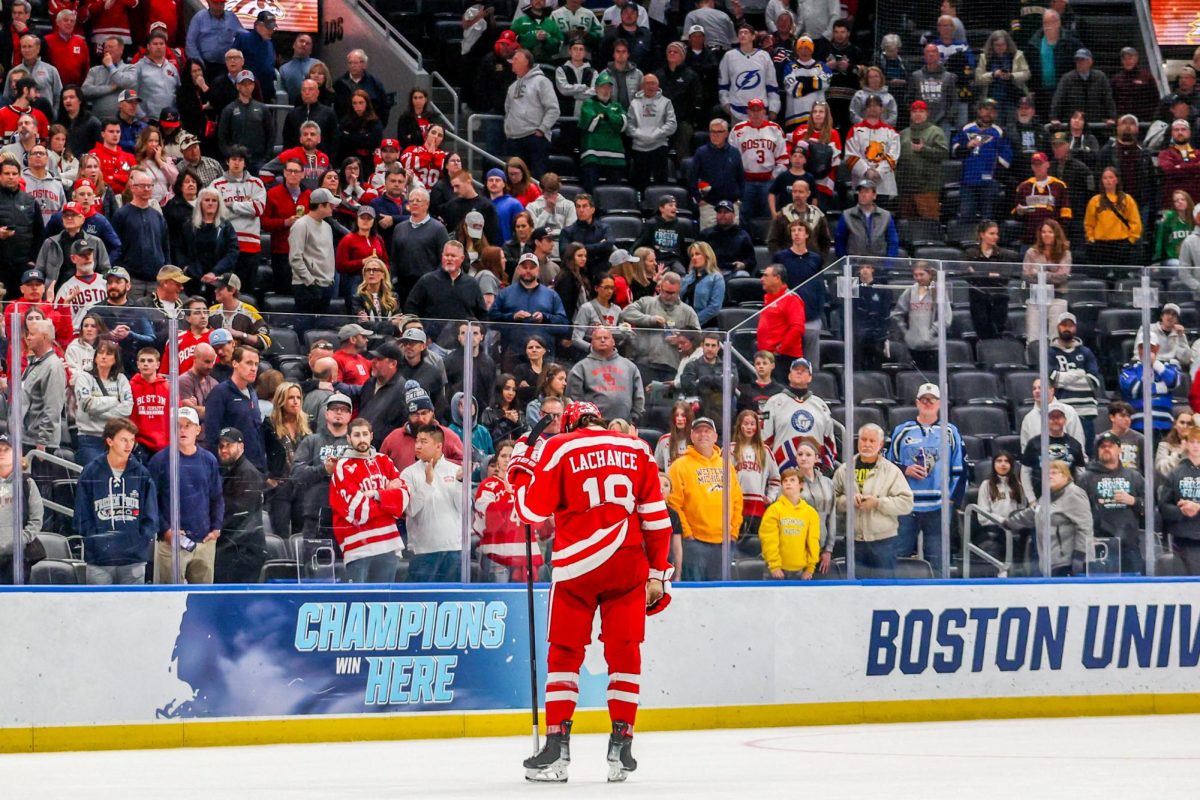
IT BEGS THE QUESTION: Why, if recruiting so many highly drafted players doesn’t provide as significant a talent advantage as it seems, is BU still doing it? Especially when it means trotting out the youngest roster in the country?
“Because you’re BU,” the NHL scout said. “You want to be the most blue blood program in college hockey. And by getting the best players and the most draft picks to commit, you’re telling the next generation of kids: ‘BU is where I want to go if I want to play in the NHL.’”
The well never dries for BU, which means that even though the Terriers lose so many players to the NHL after only two or three seasons, they can also reliably replace them every year. That’s how, after losing No. 1 overall pick Macklin Celebrini and superstar defenseman Lane Hutson from the 2023-24 team, BU’s 2024-25 team still started the season No. 3 in the country and eventually made the national championship. That’s how this year’s team is starting at No. 2, even though BU lost its entire leadership group from that title game team. While programs like Western rely on their player development models, trusting that lower-pedigree players will eventually grow into stars, BU doesn’t have to wait. The recruits they bring in are already stars. This is what being a blue blood program ultimately means — it’s not winning the natty every year, it’s giving yourself a chance to win the natty every year.
Pandolfo has been in charge for three seasons and has made the Frozen Four in every one. Western, meanwhile, was playing in its first ever Frozen Four last season, and Quinnipiac hasn’t been back since winning the 2023 title. The one-and-done format of the NCAA tournament makes it unpredictable, but BU is giving itself so many bites at the apple that eventually, one would think, it’s going to win it all.
Said Ferschweiler: “If we played BU 10 times, could they have beat us several of those? Of course they could’ve.”
The price of that sustainability is roster age. BU is the youngest team in the country this year. It’ll likely always be amongst the youngest under Pandolfo. And of Ferschweiler, Upton and the NHL scout, none could tell me that having an older roster didn’t provide an advantage come the postseason. Ferschweiler admitted the Broncos’ age certainly provided a different physical maturity and perhaps a different mental maturity, too. Upton said he does believe an older team would handle adversity within a game and season better than a younger one, before referencing Western’s win over UMass in the NCAA regional final, when the Broncos trailed heading into the third period but eventually won 2-1.
And the NHL scout was most bullish of all on what older teams have over younger ones.
“They’re just more physical,” he said. “They win more one-on-one battles… they’ll do anything. They’ll run through the wall, they’ll stick their teeth into the puck to block a shot. Their compete and their willingness to do whatever it takes just wins it more often than not.”
If that is indeed true, it’s hard to argue ultra-young rosters aren’t at a disadvantage in one-and-done postseason games, especially when facing older teams that can close the talent gap, like Western. But the flip side of that coin is that programs like Western aren’t making the Frozen Four every year. Go look at some of the non-blue-blood programs that have made the Frozen Four the last half decade. St. Cloud State took the tied-12th oldest roster to the national championship game in 2021, and the Huskies have only gotten as far as the regional final since. Same goes for UMass, which defeated St. Cloud in that title game (albeit with a younger roster, but one that was still led by seniors). Minnesota State (with the 15th-oldest roster) lost to Denver in the 2022 championship but doesn’t have an NCAA tournament win over the last three seasons. Meanwhile, BU and Michigan, famous for bringing in truckloads of draft picks every year, both went on runs of three consecutive Frozen Fours since COVID. That’s the advantage high draft picks provide — in most cases, they’ll be good right away. Lower draft picks and undrafted players can and do reach that same level; it just takes them longer, and that development process lowers the program’s chances to compete every single year.
Was the wait worth it for WMU? Clearly. But it’s not like BU’s philosophy has it miles away from hanging another banner. Even if the Terriers’ youth ultimately does put them at a disadvantage come the big game, they’ve got to reach the big game for it to even matter, and no one does that better than BU.
“We’re still confident that we can find a way to win the whole thing,” Pandolfo said. “We haven’t yet. But we’re going to continue to work at it.”
